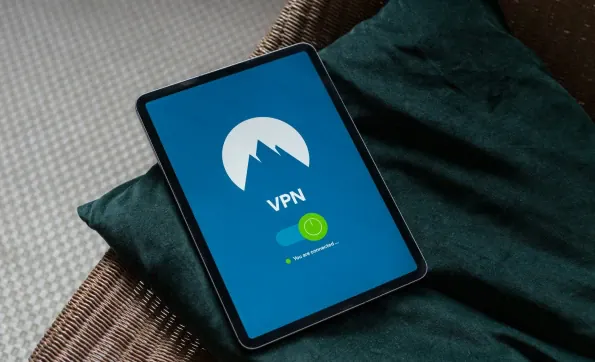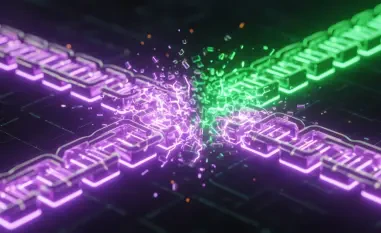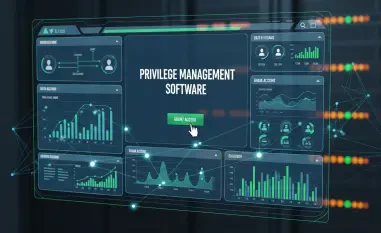The recent discovery of a critical security vulnerability in Ivanti Connect Secure (ICS) VPN appliances, identified as CVE-2025-22457, has sent ripples through cybersecurity communities worldwide. This flaw, linked to a suspected China-backed cyberespionage group known as UNC5221, has led to an urgent call for awareness and action among organizations. The vulnerability, which leads to a buffer overflow, allows for remote code execution (RCE), potentially compromising an entire network. The notorious group’s exploitation of this flaw highlights a dangerous escalation in the tactics used by sophisticated cyber threat actors.
Details of CVE-2025-22457
Exploitation by UNC5221
UNC5221 has drawn significant attention due to its sophisticated deployment of various malware families, such as TRAILBLAZE, BRUSHFIRE, and SPAWN. TRAILBLAZE acts as a minimalistic in-memory dropper, designed to evade traditional detection methods, while BRUSHFIRE, a passive backdoor, lingers quietly within infected systems. The malware ecosystem also includes SPAWN and its variants, which boast functionalities like disabling logging (SPAWNSLOTH), extracting and encrypting Linux kernel images (SPAWNSNARE), and evolving functionalities (SPAWNWAVE). The combination of these malware families within the ICS VPN environment marks a significant advancement in cyberespionage techniques aimed mainly at critical infrastructure.
The UNC5221 group’s modus operandi involves leveraging zero-day vulnerabilities, making it a formidable adversary. By targeting edge appliances and embedding passive backdoors, the group ensures prolonged and concealed access to infiltrated networks. The first signs of CVE-2025-22457 exploitation emerged in mid-March 2025, leading to a rapid response from Ivanti to mitigate the risk.
Immediate Actions Taken
Upon identification of the vulnerability, Ivanti, in collaboration with the cybersecurity firm Mandiant, took swift measures to inform their clientele and broader cybersecurity networks. Daniel Spicer, the Chief Security Officer at Ivanti, stressed the company’s commitment to transparency and proactive defense strategies. Ivanti issued advisories directly to their customers, detailing the vulnerability and the necessary steps to secure their systems. The deployment of version 22.7R2.6 of the ICS software on February 11, 2025, included a critical patch that addressed the flaw, thereby significantly reducing the risk for users who adhere to the provided guidelines and regularly update their systems.
The Malware Landscape
Introduction of TRAILBLAZE and BRUSHFIRE
One of the more alarming aspects of the CVE-2025-22457 exploitation is the introduction of new malware families such as TRAILBLAZE and BRUSHFIRE. TRAILBLAZE, a minimalistic in-memory dropper, is designed to operate stealthily, avoiding detection by traditional endpoint protection measures. This malware is capable of quickly delivering its payload into memory and erasing evidence of its presence, thus posing a considerable challenge for defenders. Once inside the network, TRAILBLAZE ensures the seamless operation of subsequent malware.
BRUSHFIRE, on the other hand, serves as a more persistent threat. This passive backdoor has the capability to remain dormant for extended periods, making it incredibly difficult to detect. When activated, BRUSHFIRE provides attackers a stealthy means of maintaining access to the compromised network, exfiltrating data, and potentially deploying further malware. The integration of these new malware families with the existing SPAWN ecosystem signifies a sophisticated and evolving threat landscape.
Persistent Threats
UNC5221’s deployment strategy employs shell-script droppers that execute TRAILBLAZE, inject BRUSHFIRE, and then meticulously remove any temporary files to evade detection. Additionally, the SPAWN malware variants demonstrate the group’s ability to adapt and enhance their toolset. SPAWNSLOTH disables critical logging mechanisms, rendering incident response efforts less effective, while SPAWNSNARE and SPAWNWAVE showcase advanced data manipulation and extraction capabilities.
Historically, UNC5221’s approach involves targeting vulnerabilities in critical infrastructure and leveraging sophisticated backdoors to maintain a low profile. Such strategies enable prolonged exploitation and data exfiltration, raising concerns about the resilience and integrity of essential services. The emphasis on targeting network security devices underscores the evolving threat landscape, where cyberespionage groups increasingly focus on crucial nodes within enterprise networks.
Encouraging a Proactive Defense Posture
Essential Updates and Patches
Ivanti’s proactive approach in addressing CVE-2025-22457 highlights the necessity of timely software updates and patches for mitigating cybersecurity risks. Users of ICS VPN appliances are strongly urged to upgrade to version 22.7R2.6 or later to safeguard their environments. This practice ensures that security patches are applied, closing potential entry points for malicious actors. Organizations must prioritize the implementation of continuous monitoring solutions that can detect anomalies and unusual network activity, indicative of sophisticated threats like those posed by UNC5221.
Regularly updated threat intelligence feeds, coupled with incident response protocols, can equip organizations with the knowledge and tools needed to respond swiftly to emerging threats. A multifaceted approach that includes user education and stringent access controls can further enhance defensive measures, reducing the likelihood of successful exploitation.
Collaboration in Cybersecurity
The efforts of Ivanti and Mandiant emphasize the importance of collaboration in the cybersecurity sphere. By working together, sharing intelligence, and amplifying messages about vulnerabilities and mitigation strategies, companies can create a united front against increasingly sophisticated adversaries. Cybersecurity is not solely the domain of individual organizations; it requires collective action and shared vigilance.
Maintaining open lines of communication between cybersecurity vendors, infrastructure providers, and end-users is critical in building a resilient defense against advanced persistent threat (APT) groups. The lessons learned from CVE-2025-22457 exemplify the ongoing need for cooperation and transparency in the fight against cyberespionage.
Future Considerations
Preparing for Advanced Threats
The constantly evolving threat landscape necessitates a forward-looking approach to cybersecurity. As demonstrated by UNC5221, adversaries are continually refining their tactics, developing new malware, and identifying zero-day vulnerabilities. Consequently, organizations must adopt a proactive security posture, incorporating advanced threat detection technologies that go beyond traditional antivirus solutions.
Investing in employee training programs that focus on cybersecurity awareness is vital for minimizing the risk of social engineering and phishing attacks that often serve as initial penetration points. Additionally, fostering a culture of security within the organization encourages responsible behavior and vigilance at all levels.
The Role of Government and Policy
The recent identification of a significant security flaw in Ivanti Connect Secure (ICS) VPN appliances, designated as CVE-2025-22457, has caused a stir in cybersecurity circles around the globe. The vulnerability has been associated with a suspected cyberespionage group backed by China, known as UNC5221. This flaw, which results in a buffer overflow, permits remote code execution (RCE), potentially jeopardizing entire networks. The breach by UNC5221 underscores an alarming escalation in the methods employed by highly advanced cyber threat actors. This situation has led to an urgent call for heightened awareness and immediate action among organizations to safeguard their systems. The cybersecurity community is now intensely focused on mitigating this risk to prevent widespread network compromise. Measures must be taken to ensure that the affected systems are patched and secured promptly, illustrating the critical importance of maintaining robust cybersecurity practices in the face of evolving threats.













